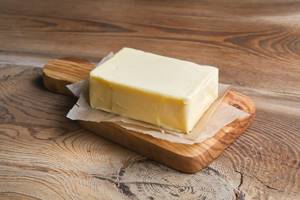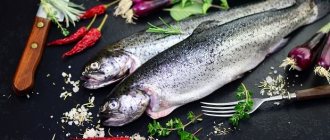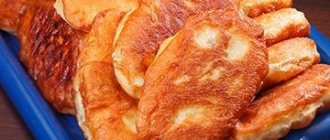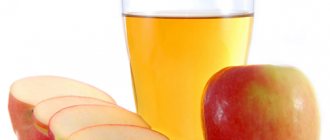Properties of butter
Nutritional value and composition | Vitamins | Minerals
How much does butter cost (average price per 1 kg)?
Moscow and Moscow region.
260 rub.
There are many foods that everyone knows about the benefits, for example, vegetables and fruits. However, there are no less wonderful and valuable products that are unfairly forgotten and are also considered harmful. Butter is precisely one of these “unfairly offended” types of food. Although recently rumors about its harm have subsided significantly, due to the obvious advantages and beneficial properties of butter.
First of all, butter is a truly special food product that is obtained by separating or churning cow's cream. Interestingly, to produce 1 kilogram of butter, you need up to 25 liters of natural cow's milk, the type of which directly determines the color of the final product. By the way, butter is characterized by a subtle odor, slightly reminiscent of a nut, and a color that can vary from white to light yellow. Do not use a darkened product, as it may cause poisoning.
Depending on the type of cream that is used to make this product, in Russia butter is usually divided into sweet cream and sour cream. And according to the mass fraction of fat, there is the following classification: traditional (82.5%), amateur (80.0%), peasant (72.5%), sandwich (61.0%) and tea (50.0%). Moreover, the calorie content of butter is quite high and amounts to approximately 748 kcal per 100 grams of product.
In cooking, the use of butter is very wide: for example, in its natural form it is spread on bread or used in meat, fish or vegetable dishes. If you mix it in equal proportions with flour, it can be used as a binding ingredient for various sauces. Just a little melted butter in broth or soup will enrich its taste and aroma. In addition, it is simply impossible to prepare baked goods without butter, especially with puff pastry, since its melting consistency gives sweet and spicy dishes a special structure.
Calorie content Drain oil. Chemical composition and nutritional value.
Nutritional value and chemical composition of "Plum butter".
The table shows the nutritional content (calories, proteins, fats, carbohydrates, vitamins and minerals) per 100 grams of edible portion.
| Nutrient | Quantity | Norm** | % of the norm in 100 g | % of the norm in 100 kcal | 100% normal |
| Calorie content | 661 kcal | 1684 kcal | 39.3% | 5.9% | 255 g |
| Squirrels | 0.8 g | 76 g | 1.1% | 0.2% | 9500 g |
| Fats | 72.5 g | 56 g | 129.5% | 19.6% | 77 g |
| Carbohydrates | 1.3 g | 219 g | 0.6% | 0.1% | 16846 g |
| Water | 25 g | 2273 g | 1.1% | 0.2% | 9092 g |
| Ash | 0.4 g | ~ | |||
| Vitamins | |||||
| Vitamin A, RE | 450 mcg | 900 mcg | 50% | 7.6% | 200 g |
| Retinol | 0.4 mg | ~ | |||
| beta carotene | 0.3 mg | 5 mg | 6% | 0.9% | 1667 g |
| Vitamin B1, thiamine | 0.01 mg | 1.5 mg | 0.7% | 0.1% | 15000 g |
| Vitamin B2, riboflavin | 0.12 mg | 1.8 mg | 6.7% | 1% | 1500 g |
| Vitamin B4, choline | 18.8 mg | 500 mg | 3.8% | 0.6% | 2660 g |
| Vitamin B5, pantothenic | 0.05 mg | 5 mg | 1% | 0.2% | 10000 g |
| Vitamin B6, pyridoxine | 0.003 mg | 2 mg | 0.2% | 66667 g | |
| Vitamin B12, cobalamin | 0.17 mcg | 3 mcg | 5.7% | 0.9% | 1765 g |
| Vitamin D, calciferol | 1.3 mcg | 10 mcg | 13% | 2% | 769 g |
| Vitamin E, alpha tocopherol, TE | 1 mg | 15 mg | 6.7% | 1% | 1500 g |
| Vitamin K, phylloquinone | 7 mcg | 120 mcg | 5.8% | 0.9% | 1714 g |
| Vitamin RR, NE | 0.2 mg | 20 mg | 1% | 0.2% | 10000 g |
| Niacin | 0.1 mg | ~ | |||
| Macronutrients | |||||
| Potassium, K | 30 mg | 2500 mg | 1.2% | 0.2% | 8333 g |
| Calcium, Ca | 24 mg | 1000 mg | 2.4% | 0.4% | 4167 g |
| Magnesium, Mg | 0.5 mg | 400 mg | 0.1% | 80000 g | |
| Sodium, Na | 15 mg | 1300 mg | 1.2% | 0.2% | 8667 g |
| Sera, S | 8 mg | 1000 mg | 0.8% | 0.1% | 12500 g |
| Phosphorus, P | 30 mg | 800 mg | 3.8% | 0.6% | 2667 g |
| Microelements | |||||
| Iron, Fe | 0.2 mg | 18 mg | 1.1% | 0.2% | 9000 g |
| Manganese, Mn | 0.004 mg | 2 mg | 0.2% | 50000 g | |
| Copper, Cu | 6 mcg | 1000 mcg | 0.6% | 0.1% | 16667 g |
| Selenium, Se | 1 mcg | 55 mcg | 1.8% | 0.3% | 5500 g |
| Fluorine, F | 2.8 mcg | 4000 mcg | 0.1% | 142857 g | |
| Zinc, Zn | 0.15 mg | 12 mg | 1.3% | 0.2% | 8000 g |
| Digestible carbohydrates | |||||
| Mono- and disaccharides (sugars) | 1.3 g | max 100 g | |||
| Essential amino acids | 0.353 g | ~ | |||
| Arginine* | 0.026 g | ~ | |||
| Valin | 0.042 g | ~ | |||
| Histidine* | 0.035 g | ~ | |||
| Isoleucine | 0.041 g | ~ | |||
| Leucine | 0.076 g | ~ | |||
| Lysine | 0.045 g | ~ | |||
| Methionine | 0.017 g | ~ | |||
| Methionine + Cysteine | 0.03 g | ~ | |||
| Threonine | 0.047 g | ~ | |||
| Tryptophan | 0.043 g | ~ | |||
| Phenylalanine | 0.042 g | ~ | |||
| Phenylalanine+Tyrosine | 0.08 g | ~ | |||
| Nonessential amino acids | 0.474 g | ~ | |||
| Alanin | 0.036 g | ~ | |||
| Aspartic acid | 0.057 g | ~ | |||
| Glycine | 0.024 g | ~ | |||
| Glutamic acid | 0.142 g | ~ | |||
| Proline | 0.048 g | ~ | |||
| Serin | 0.054 g | ~ | |||
| Tyrosine | 0.042 g | ~ | |||
| Cysteine | 0.01 g | ~ | |||
| Sterols (sterols) | |||||
| Cholesterol | 170 mg | max 300 mg | |||
| Saturated fatty acids | |||||
| Saturated fatty acids | 47.1 g | max 18.7 g | |||
| 4:0 Oil | 2.69 g | ~ | |||
| 6:0 Kapronovaya | 1.23 g | ~ | |||
| 8:0 Caprylic | 0.66 g | ~ | |||
| 10:0 Kaprinovaya | 1.51 g | ~ | |||
| 12:0 Lauric | 1.72 g | ~ | |||
| 14:0 Miristinovaya | 7.94 g | ~ | |||
| 16:0 Palmitinaya | 22.08 | ~ | |||
| 18:0 Stearic | 6.82 g | ~ | |||
| Monounsaturated fatty acids | 22.06 | min 16.8 g | 131.3% | 19.9% | |
| 14:1 Myristoleic | 1.54 g | ~ | |||
| 16:1 Palmitoleic | 2.32 g | ~ | |||
| 18:1 Oleic (omega-9) | 18.01 | ~ | |||
| Polyunsaturated fatty acids | 2.2 g | from 11.2 to 20.6 g | 19.6% | 3% | |
| 18:2 Linolevaya | 0.91 g | ~ | |||
| 18:3 Linolenic | 0.07 g | ~ | |||
| Omega-3 fatty acids | 0.07 g | from 0.9 to 3.7 g | 7.8% | 1.2% | |
| Omega-6 fatty acids | 0.91 g | from 4.7 to 16.8 g | 19.4% | 2.9% |
The energy value of plum oil is 661 kcal.
Primary Source: Created in the application by the user. Read more.
** This table shows the average levels of vitamins and minerals for an adult. If you want to know the norms taking into account your gender, age and other factors, then use the “My Healthy Diet” application.
The benefits of butter
Undoubtedly, butter is very high in calories, however, if consumed in moderation, these calories can give the body the necessary energy and strength. In addition, the benefit of butter lies in its fat content, without which regular cell renewal is impossible. It has been scientifically proven that if children lack these substances during a period of rapid growth, this can cause mental retardation and a decrease in intellectual abilities.
Vitamin A, which is contained in this product, confirms the benefits of butter for people suffering from duodenal and gastric ulcers, due to the fact that it promotes the speedy healing of wounds. However, it should be remembered that, as with any high-calorie product, you need to be judicious with butter and use it within reasonable limits.
How much does your breakfast weigh?
A butter sandwich for breakfast with a calorie content of 80 to 150 kcal is quite acceptable, even if a person is trying to lose weight. If you completely exclude fats from your diet, you may encounter the problem of flaking skin, brittle nails, hair and other problems.
If you make a sandwich from a loaf, the value will be 150 kcal, from white bread - 3 units less.
The best option is black bread (slice weighing 30 g). In this case, the calorie content will be 110-120 kcal. It is useful to use bread baked from flaxseed, whole grain or bran flour for a sandwich. Read about the calorie content of bread here. The morning meal should account for at least 30% of the total daily number of required energy units. By the way, read about the calorie content of vegetable oil here.
Do not deny yourself the pleasure of eating a piece of fresh bread with a slice of delicious butter. If you are afraid of gaining weight, simply calculate the permissible daily intake of the product.
Production history
According to history, butter appeared back in 2000 BC, at least this is what ancient records that were found in India testify to. However, the production technology was first developed by the Jews, and mentions of it are even in the Old Testament. In ancient times, the presence of butter in the house indicated that the family lived in abundance, since it was a rather expensive product due to the technology of its production.
According to historians, butter was widely used in Ireland as early as the 5th century, and records from the 8th century indicate that Norwegian sailors took it with them on their voyages. It became widely known in Russia closer to the 9th century, and at about the same time the oil appeared in Italy.
In Russia, a new type of butter began to be produced for the first time - melted butter, which got its name due to the production process. To make it, they took cream, which was previously heated in an oven, then churned, and then thoroughly washed with cold water. Such a pure product was stored for very little time, and to extend its shelf life it was reheated again, and then washed again with cold water and reheated again. Eventually it was divided into two layers, with the top one consisting entirely of natural milk fat, which was cooled until it began to crystallize. The result was ghee, which was supplied to other countries.
In Russia, industrial production of butter began only in the 19th century, when it became available to the majority of the population. It was at that time that there were a large number of factories that were engaged in its production: there were more than a hundred of them. Since that very moment, Russian butter has been used not only by compatriots. It is sent for export, as it is in great demand. In particular, one of the best types is considered Vologda, which has a slight taste of walnuts and is prepared on the basis of milk, which is boiled before use.
Harm to the body
The recommended daily dose of natural butter consumption is 10-20 g. If the product is abused, the human body can be harmed in the form of increased cholesterol levels in the blood and the risk of thrombosis.
If the recommended daily intake is regularly violated, heart and liver diseases can develop. In addition, oil is a high-calorie product, so the habit of adding it to all dishes without following the norm leads to obesity.
Vegetable butter, as a rule, contains trans fats that are harmful to health. In addition, consuming a low-quality product can lead to poisoning, stomach upset and fever.
Abuse of ghee is fraught with disturbances in the functioning of the thyroid gland, liver, and gall bladder.
Eating ghee is contraindicated for people suffering from:
- diabetes mellitus;
- gout;
- cardiac diseases;
- obesity.
The recommended intake of ghee is 4 or 5 teaspoons per week.

© Patryk Michalski — stock.adobe.com
How to select and store

Try to avoid buying butter that is wrapped in parchment. The fact is that in this case the oil is exposed to direct sunlight, as a result of which it oxidizes and loses its beneficial properties. It is better to give preference to one that is sold wrapped in foil.
If you bought oil and it turns out that it has been exposed to sunlight for a long time, and the top layer has become yellow and dull, you can simply cut off this layer and throw it away. The rest is quite usable.
Of course, it is best to store butter in the refrigerator, or at least in a place where the temperature does not exceed 12 degrees. Give preference to dark places, because, as already mentioned, sunlight has a detrimental effect on the product.
It is not recommended to use pure glass for storage; it is better to give preference to ceramics or porcelain. The fact is that oil in glass quickly loses its beneficial properties.
Use in folk medicine

In folk medicine, it is recommended to give butter to teething children. To reduce these unpleasant sensations, it is enough to smear the child’s gums so that he does not feel discomfort for some time.
If you suffer from a dry cough or there is blood when coughing up, traditional medicine recommends consuming it with sugar to alleviate the condition. In addition, the combination of butter and sugar acts as a diuretic, allowing you to remove excess fluid from the body and cleanse it.
If you have some kind of rash on your body, for example, with lichen or urticaria, you need to lubricate the skin with butter to relieve the condition.
If you suffer from diarrhea, consume it with wine. Pomegranate juice and a little butter help with dysentery.
Our ancestors used butter as a cosmetic product. If you melt it and apply it to your skin at night, it will become more tender and elastic, and will also be saturated with useful substances.
To prevent colds, use butter with lemon. To do this, you need to take the juice of half a lemon and 150 g of oil, mix, add salt and herbs and consume one teaspoon every day. Garlic oil has the same effect. For it you need to take 150 g of the product and 10 grams of garlic, mix and also use a teaspoon.










